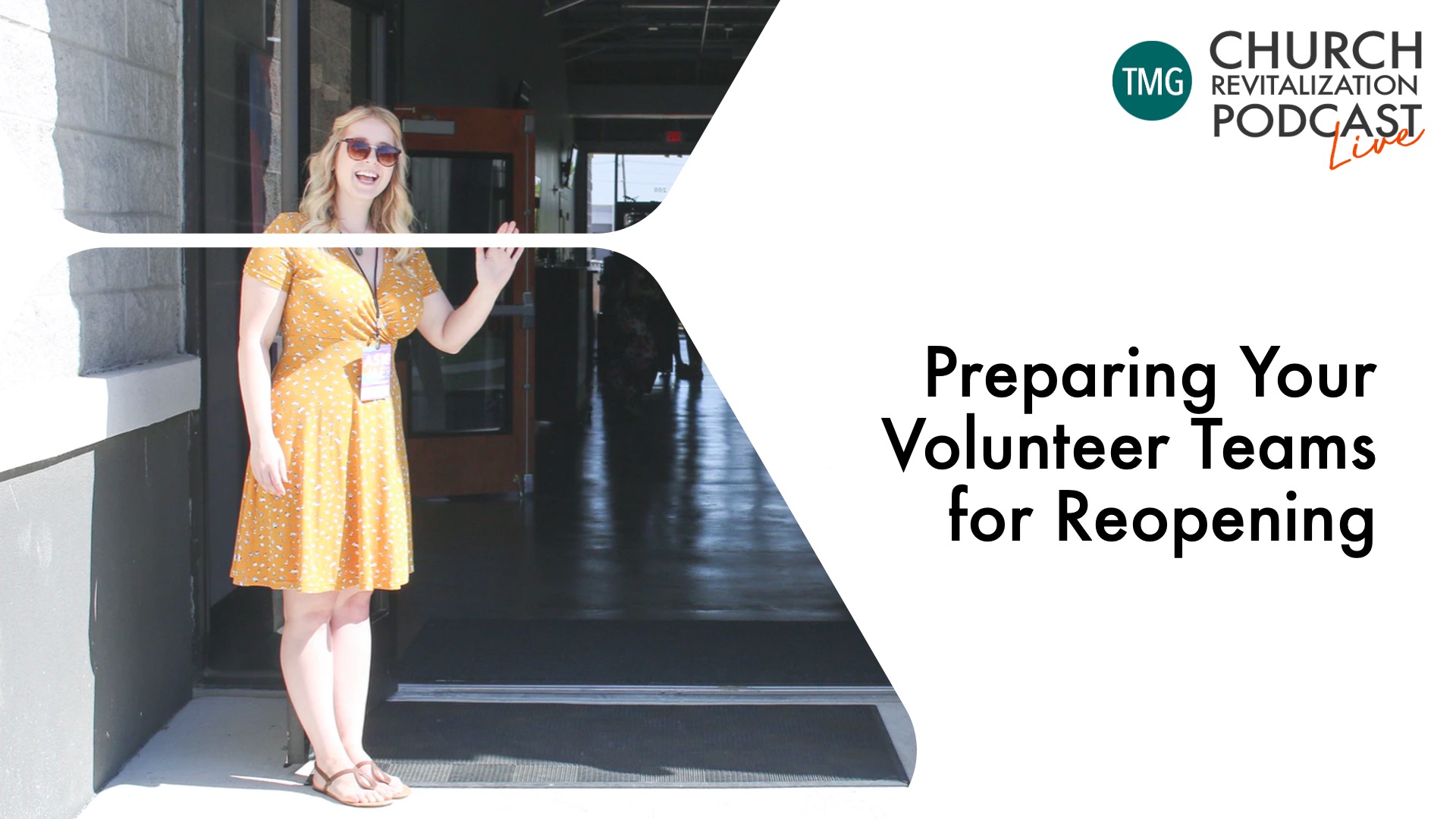The phased reopening of your church will only be successful with good volunteer planning.
In this week’s episode of the Church Revitalization Podcast, Scott and I talked through some basic steps to ensure you’ll have thought through your volunteer teams and will be ready for your church’s reopening plan. You can watch the video version of the podcast on Facebook or YouTube.
Step 1: Audit Your Volunteer Positions
The first thing you need to do is develop a list of all your volunteer positions and understand who usually serves there. That may sound elementary, but many churches have never taken the time to actually work through that documentation. Having all your positions documented along with your workers will give you the necessary starting point to figuring out what your new plan needs to be going forward. Specifically, it will help you answer these questions:
- Are we double-dipping (or triple or quadruple) with our volunteers?
If you’re like many churches, you may have people serving in several roles. Your children’s ministry leader may not even be aware that three of your pre-school classroom assistants are also greeters, or putting out refreshments or counting money on the stewardship team.
- How heavy are we with volunteers that are in the “vulnerable population” defined by the CDC?
Many churches have faithful volunteers that are post-retirement age. You need to communicate with them about whether it will be a good idea for them to return to those positions during this time.
As a more advanced level of work on this topic, also consider when you’ll be able to turn your basic volunteer list into a comprehensive volunteer planning system. Ideally, your system will include job descriptions of all your volunteer positions so that future recruitment efforts will be able to clearly speak to what the job entails. You’ll also want to develop preferred character competencies and spiritual gifts for each position. Download a free volunteer job description template here (no form required). Remember, the big picture goal is to get the right person in the right position the first time and then watch them thrive. This is likely more work than you can take on right now, but this should make the project list for the next 6-12 months.
Step 2: Design Your Ideal (for now) Team Structure
Some interesting things are changing in our church volunteer needs right now. As we begin to re-commune on our church campuses this summer and into the fall, Lord willing, we’ll be focusing on fewer teams to start, but with greater needs.
We’ve seen our ushers do far less ushering in recent decades. That will have to change. As we cordon off portions of our sanctuaries and worship centers and require distancing between family units, our users will have to seat people as they did in the “old days”. That is going to require more ushers than you may utilize right now. There will be necessary training to get done not only for seating but for communion, offering, and any other interactions you may attempt.
You will likely have new needs for volunteers in the “sanitation arts” team as well. Making sure things are cleaned well and often is obviously going to be a new necessity. One aspect that may prove to be helpful in the near-term is that children’s programming will probably not come back until we see more of the country in “Phase 3” territory which will probably be this fall at the earliest. That may free up some volunteers to be reassigned elsewhere while you recruit permanent people for new needs.
Step 3: Recruit and Train New Volunteer Leaders
How are we going to get all these new volunteers? A plea from the pulpit may not have the effect it once did. Now that people can watch your services with coffee in hand from the safety of their living room. You’re going to have to flex all of your leadership muscles.
Hopefully, you’ve led your small group ministry well during this time or even started a new small group ministry (hooray!). Those leaders will be a great way to communicate the needs you now have for volunteers. Getting small groups to serve as teams is a great option, too! Empower existing volunteers to recruit new team members. There are lots of great ways to find more volunteers. The best ways include boots on the ground and personal invitations; a blanket request for more volunteers won’t be enough.
Once you have found some new, willing servants they will need to be on-boarded. Getting people to do what we need them to do doesn’t happen by osmosis, so some training will be in order.
Our friends over at Serve HQ have thought a lot about how churches need to train people and they’ve developed some great online video-based training systems. Much of what you need to communicate may even already be included in some of the hundreds of ready-made church training they have in the library. Visit them at https://servehq.church and use coupon code MALPHURS and they will give you an extended 45-day free trial instead of the regular 14 days.
EDIT: A training tip came in that I wanted to include here. Having your church do a “soft-opening” the week before you bring your people back would be a great opportunity to train your teams. Your audience for that Sunday will be your volunteers only and it will give all of them a chance to work in their new roles before having to deal with the full congregation (whatever that may be).
We’re here for you and praying for your success. If you’d like to connect with one of us to discuss how we can help your church get further, faster, and with less frustration in making Disciples of Jesus, click here now.


A.J. Mathieu is the President of the Malphurs Group. He is passionate about helping churches thrive and travels internationally to teach and train pastors to lead healthy disciple-making churches. A.J. lives in the Ft. Worth, Texas area, enjoys the outdoors, and loves spending time with his wife and two sons. Click here to email A.J.


